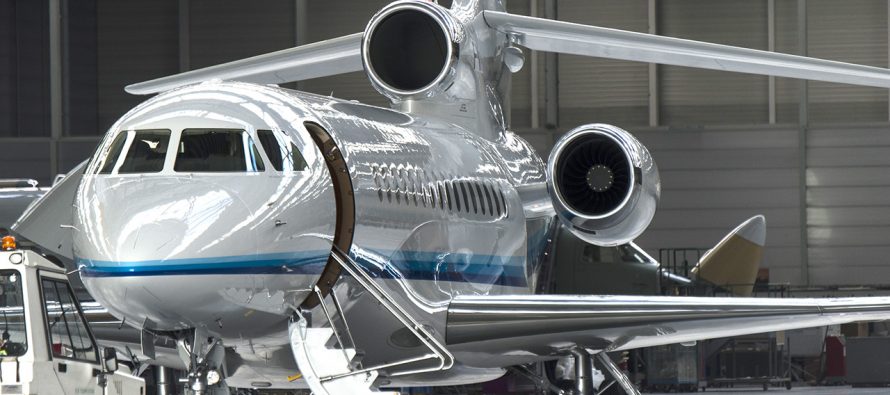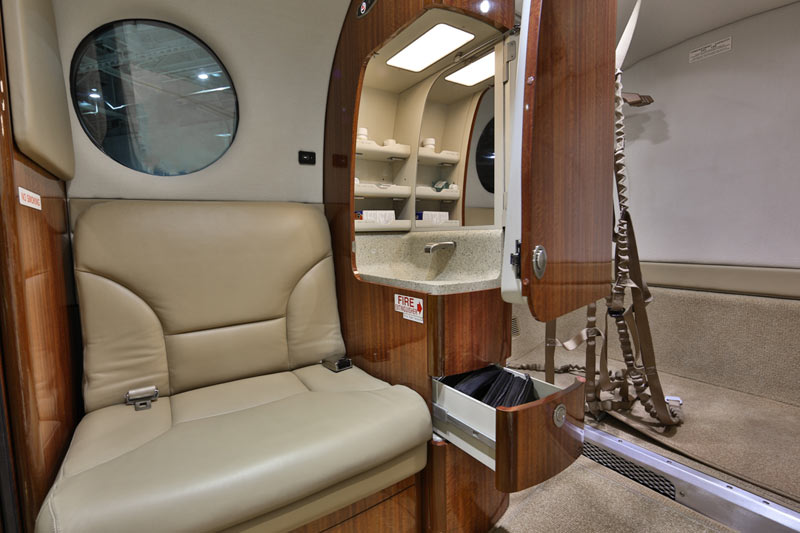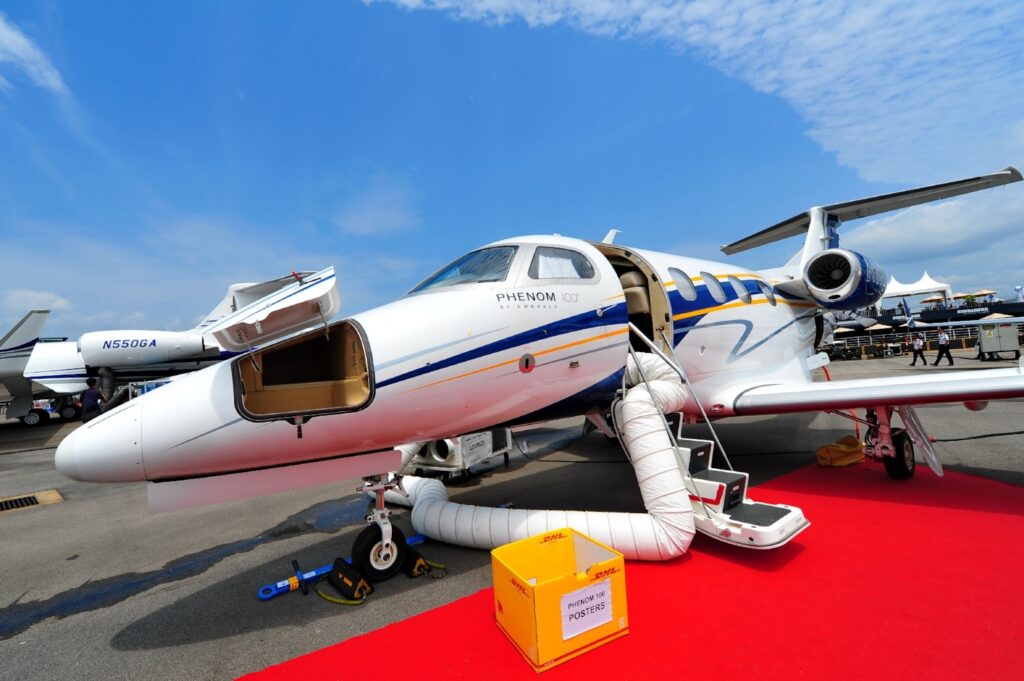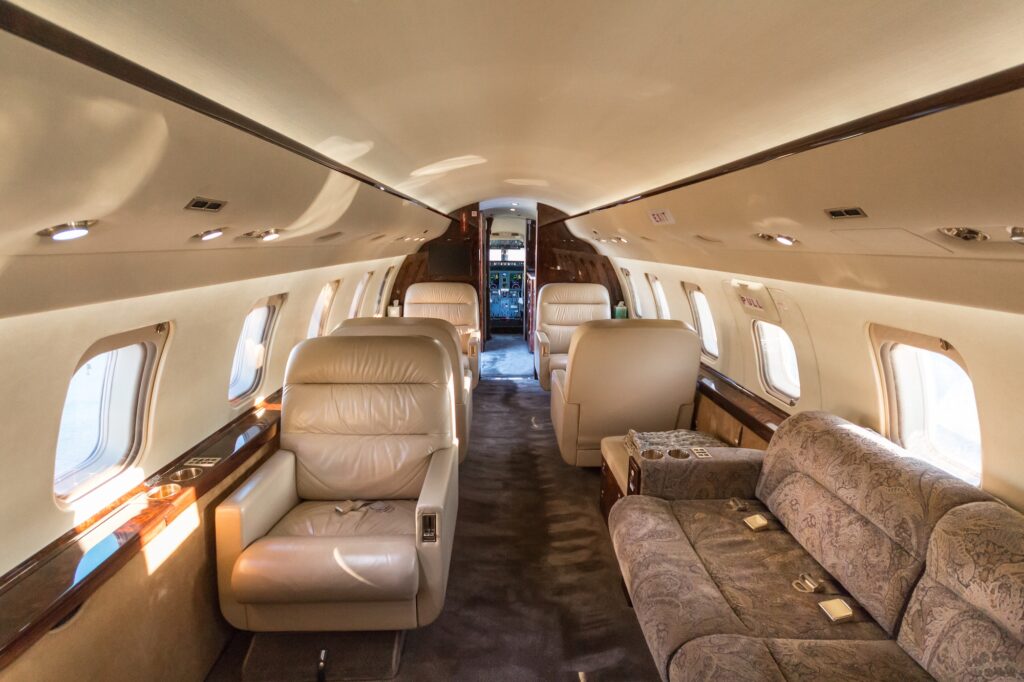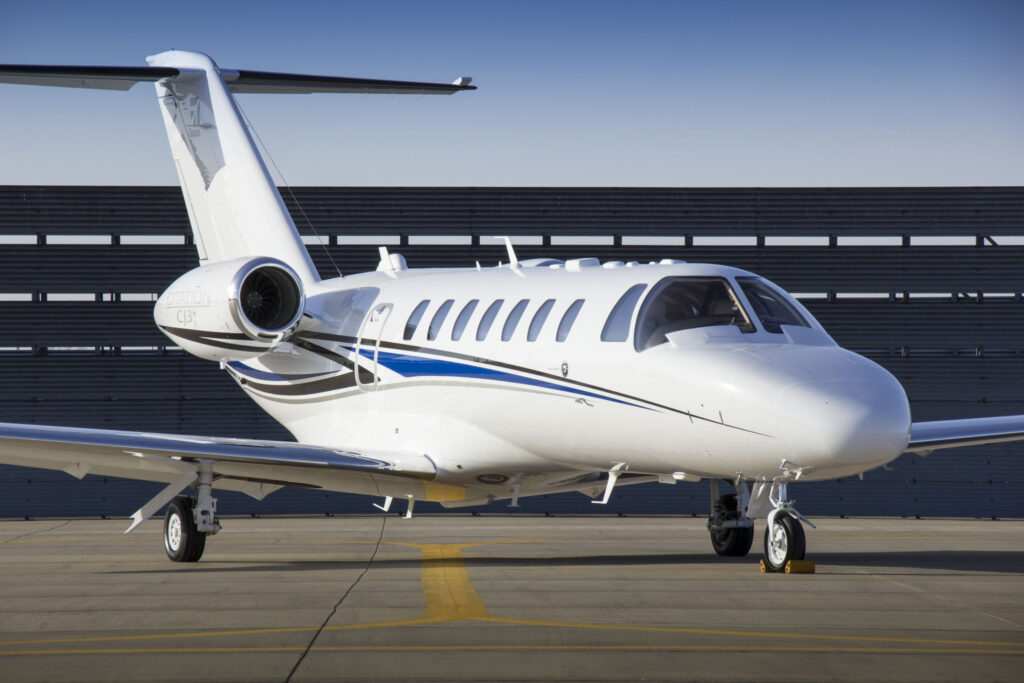Gulfstream, Bombardier, Dassault, and Embraer face off as we take a look at each of their respective biggest planes and the costs associated with them, both in purchase and operation. We’ll also take a look at how each one’s performance specs stack up against the competition.
Gulfstream G650
Cost – Gulfstream’s G650 is arguably the most luxurious private business jet in the world. With a fuselage that’s only a couple inches short of 100 feet long and a cabin that’s 53 and a half feet long, six feet and four inches tall, and eight feet and five inches wide, it’s the largest on this list.
In terms of operational costs, it comes equipped with BR725 engines that burn 452.70 gallons of fuel per hour. At $5 per gallon, that’s $2,263.50 per hour for fuel. An estimated $1,191.76 per hour for maintenance costs (both airframe and engine/APU) plus fuel adds up to $3,455.26 in direct costs per hour. At 200,000 flight miles per year, or 346 hours, that’s $1,195,519.96 annually.
Crew costs are estimated at $227,175.00 annually, hangar costs at $106,275.00, insurance at $56,598.75, and pilot training at $64,155, which adds up to $454,203.75 annually for fixed costs.
Combining annual fixed and direct costs, the G650 requires about $1,599,316.21 in annual operating costs. A 2016 G650, according to VREF, has a retail value of $68 million.
Performance – A G650’s normal cruise speed is 502 knots, its climb rate is 3,570 feet per minute, it requires 6,285 feet of runway to takeoff and 4,167 to land, and it has a range of about 7,130 nautical miles.
Bombardier Global 6000
Cost – Bombardier’s Global 6000 has a fuselage that’s 99 feet and five inches long, a cabin length of 48 feet and four inches, a cabin height of six feet and three inches, and a cabin width of eight feet and two inches.
In terms of operational costs, the Global 6000 comes equipped with BR710A2-20 engines that burn 461 gallons of fuel per hour. At $5 per gallon, that’s $2,305.00 per hour for fuel. An estimated $1,211.85 per hour for maintenance costs (both airframe and engine/APU) plus fuel adds up to $3,516.85 in direct costs per hour. At 200,000 flight miles per year, or 365 hours, that’s $1,283,650.25 annually.
Crew costs are estimated at $247,650.00 annually, hangar costs at $123,922.50, insurance at $53,076.01, and pilot training at $99,255.00, which adds up to $523,903.51 annually for fixed costs.
Combining annual fixed and direct costs, the Global 6000 is going to cost about $1,807,553.76 to operate each year. A 2016 Global 6000, according to VREF, has a retail value of $48 million.
Performance – The Global 6000’s normal cruise speed is 475 knots, it climbs at 3,300 feet per minute, it requires 6,476 feet to takeoff and 3,667 feet to land, and it has a range of about 6,080 nautical miles.
[ulp id=’BE6pmlq8yQI913DS’]
Dassault Falcon 8X
Cost – Dassault’s Falcon 8X has a fuselage that’s 80 feet and two inches long, a cabin length of 42 feet and eight inches, a cabin height of six feet and two inches, and a cabin width of seven feet and seven inches.
In terms of operational costs, the Falcon 8X comes equipped with PW307D engines that burn 346.50 gallons of fuel per hour. At $5 per gallon, that’s $1,732.50 per hour for fuel. An estimated $835.69 per hour for maintenance costs (both airframe and engine/APU) plus fuel adds up to $2,568.19 in direct costs per hour. At 200,000 flight miles per year, or 366 hours, that’s $939,957.54 annually.
Crew costs are estimated at $257,730.00 annually, hangar costs at $78,800.00, insurance at $44,850.00, and pilot training at $91,260.00, which adds up to $472,640.00 annually for fixed costs.
Combining annual fixed and direct costs, the Falcon 8X is going to cost about $1,412,597.54 in annual operating costs. A 2016 Falcon 8X, according to VREF, has a retail value of $57.5 million.
Performance – The Falcon 8X’s normal cruise speed is 474 knots, its climb rate data is not yet available (it’s the newest aircraft on this list), it requires 5,820 feet to takeoff and 3,591 feet to land, and its range is 6,630 nautical miles.
Embraer Legacy 650
Cost – Embraer’s Legacy 650 has a fuselage that’s 86 feet and five inches long, a cabin length of 49 feet and eight inches, a cabin height of six feet, and a cabin width of six feet and nine inches.
In terms of operational costs, the Legacy 650 comes equipped with AE3007A2 engines that burn 362.00 gallons of fuel per hour. At $5 per gallon, that’s $1,810 per hour for fuel. An estimated $855.68 per hour for maintenance costs (both airframe and engine/APU) plus fuel adds up to $2,665.68 in direct costs per hour. At 200,000 flight miles per year, or 399 hours, that’s $1,063,606.32 annually.
Crew costs are estimated at $227,175.00 annually, hangar costs at $79,657.50, insurance at $25,500.00, and pilot training at $50,310.00, which adds up to $382,642.50 annually for fixed costs.
Combining annual fixed and direct costs, the Legacy 650 is going to cost about $1,446,248.82 in annual operating costs. A 2016 Legacy 650, according to VREF, has a retail value of $27 million.
Performance – The Legacy 650 cruises at 435 knots, has a climb rate of 3,022 feet per minute, requires 5,597 feet to takeoff and 3,910 to land, and has a range of 3,980 nautical miles.
Although each of these aircraft are considered large jets, they’re all very different. If you’re looking for the largest, flashiest, fastest, and most expensive aircraft, the G650 is the way to go. The Global 6000 fits a similar mission and costs less at purchase, but costs more to operate. If you’d still like a massive, flashy jet, but are more concerned about efficiency, the Falcon 8X might be your best bet. The Legacy 650 is a large jet that costs less than half what the G650 costs at purchase, but is significantly smaller, has a much shorter range and doesn’t perform nearly as well.
This is simply meant to serve as a guide to a few of the largest, flashiest private jets available on the market. Gulfstream certainly has some other planes that are bigger than the Falcon 8X and Legacy 650, but this is intended to show you the cream of the crop from some of the most popular manufacturers. It’s also worth mentioning that VREF’s valuations are on a very generic level, and actual purchase price depends upon the condition of the plane, the state of the market, and the quality of your broker.
Performance specs were provided by JetNet.
Costs were provided by Aircraft Cost Calculator.

